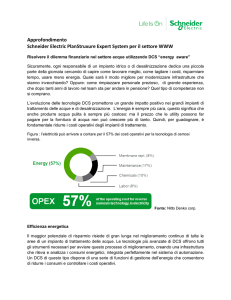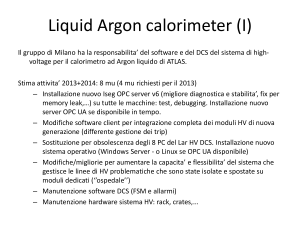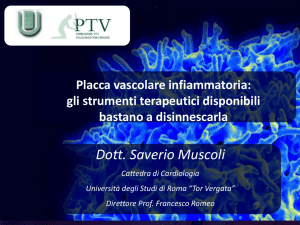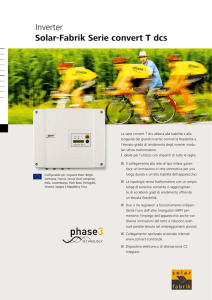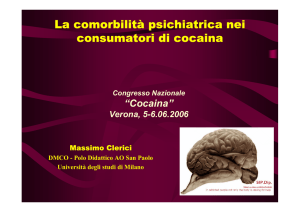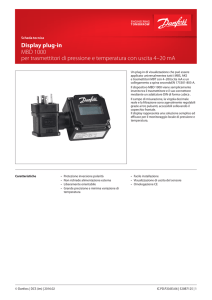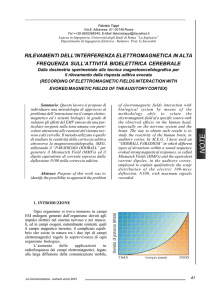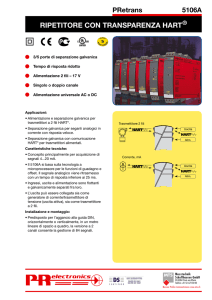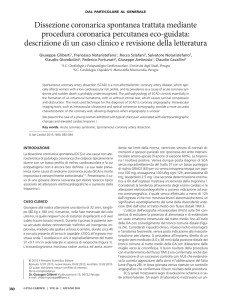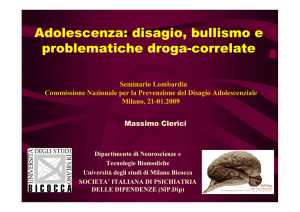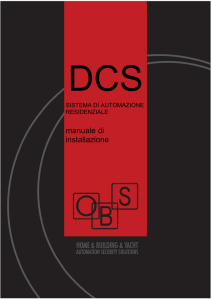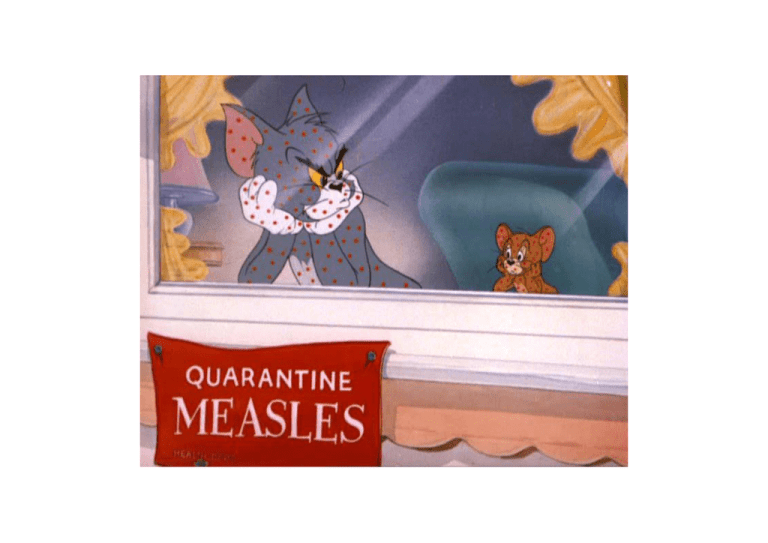
Infezione da Morbillo
Il morbillo è una malattia altamente contagiosa che colpisce i bambini.
E’ causato da infezione da Virus del Morbillo (MV) che causa infezione respiratoria acuta,
con un certo di numero di casi di morte o complicazioni neurologiche.
L’infezione da MV:
• rimane una delle principali cause di morbilità e di mortalità infantile nei paesi in via di
sviluppo
• focolai di morbillo si verificano regolarmente in paesi industrializzati paesi.
• induce un'efficace risposta immunitaria in grado di eliminare completamente il virus,
• Induce una risposta immunitaria duratura che protegge da re-infezioni.
• dà luogo ad attivazione del sistema immunitario non specifica caratterizzata da:
–
–
•
•
MV induce una transitoria ma grave immunosoppressione, che aumenta la
suscettibilità dei pazienti a contrarre infezioni batteriche e virali secondarie con esito
fatale.
Le anomalie includono
–
–
–
•
una spontanea proliferazione delle cellule mononucleate del sangue periferico e
una up-regolazione dell’espressione di marcatori di attivazione delle cellule
la scomparsa della reazione di ipersensibilità di tipo ritardato,
ridotta proliferazione dei linfociti e
riduzione della risposta citotossica allospecifica.
Il meccanismo immunologico responsabile di questo apparente paradosso che si
osserva in corso di infezione da virus del morbillo è oggetto di studio.
Neutral commitment
Th1 commitment
Th2 commitment
vaccine
Dendritic cells (DCs) represent a major target of MV and could be involved in immunosuppression.
In this study, human monocyte-derived DCs were used to demonstrate that DC apoptosis in MV-infected
DC–T-cell cocultures is Fas mediated, whereas apoptotic T cells could not be rescued by blocking the
Fas pathway.
Two novel consequences of DC apoptosis after MV infection were demonstrated
• (i) Fas-mediated apoptosis of DCs facilitates MV release, while CD40 activation enhances MV
replication in DCs. Indeed, detailed studies of infectious MV release and intracellular MV nucleoprotein
(NP) showed that inhibition of CD40-CD40L ligand interaction blocks NP synthesis. We conclude that
the CD40 ligand expressed by activated T cells first enhances MV replication in DCs, and then Fas
ligand produced by activated T cells induces Fas-mediated apoptosis of DCs, thus facilitating MV
release.
•(ii) Not only MV-infected DCs but also bystander uninfected DCs undergo a maturation process
confirmed by CD1a, CD40, CD80, CD86, CD83, and major histocompatibility complex type II labeling.
The bystander maturation effect results from contact and/or engulfment of MV-induced apoptotic DCs by
uninfected DCs. A model is proposed to explain how both a specific immune response and
immunosuppression can simultaneously occur after MV infection through Fas-mediated apoptosis and
CD40 activation of DCs.
•
To
better
understand
the
mechanisms involved with MVinduced immunosuppression, the
authors used transgenic mice
(YAC-CD46) expressing a fulllength human CD46 genomic
clone that allows for viral
replication and analysis of MV
pathogenesis
•
LM was also chosen for this
because both innate immunity and
adaptive immuneresponses play
clearly defined roles in the control
of this infection, thus providing an
opportunity to simultaneously
examine MV-associated effects on
both these arms of the immune
response to a secondary bacterial
infection.
Reduced innate immunity cells
during MV infection in spleen
Which mechanism?
Reduction by apoptosis?
Which mechanism?
Defective proliferation?
Which mechanism?
Defective cytokine production?
The purpose of this study was to investigate the consequences of DC infection by MV,
particularly concerning their maturation and their ability to generate CD8 T cell
proliferation.
•MV-infected Langerhans cells or monocyte-derived DCs undergo a maturation process
similarly to the one induced by TNF-a or LPS, respectively.
•CD40 ligand (CD40L) expressed on activated T cells is shown to induce terminal
differentiation of DCs into mature effector DCs.
•In contrast, the CD40L-dependent maturation of DCs is inhibited by MV infection, as
demonstrated by CD25, CD69, CD71, CD40, CD80, CD86, and CD83 expression downregulation.
•Moreover, the CD40L-induced cytokine pattern in DCs is modified by MV infection with
inhibition of IL-12 and IL-1a/b and induction of IL-10 mRNAs synthesis.
CD40-CD40L
• The function of CD40 accounts not only for the
regulation of T-dependent humoral immune responses,
but also for cellular immune responses.
• Several immune dysfunctions observed in CD40Ldeficient mice and patients could be explained by a
failure properly to activate APCs.
• Recent in vivo studies in mouse demonstrated that CD40
ligation on the DCs can replace CD41 T cells to prime
CD8+ cytotoxic responses.
Per l’attivazione dei linfociti B
è richiesto un secondo segnale
19
Le cellule T adiuvanti stimolano la proliferazione e
poi il differenziamento (switch isotipico) delle
cellule B
X
20
MV replication in immature DCs and PBL
High MV replication in immature DCs correlates with CD40 triggering
Dendritic cells maturation
To become a potent APC, the
immature DCs need to be
activated by stimuli that promote
their maturation and migration
to the T cell areas of lymphoid
tissues.
Living bacteria, microbial products
(LPS), or various cytokines
(TNF-alfa, GM-CSF, IL-1beta)
stimulate DC maturation.
Upon
maturation,
MHC-II
molecules are delivered to the
plasma membrane and the
expression of costimulatory
membrane
molecules
is
increased, thus favoring T cell
activation.
When the mature DCs reach
secondary lymphoid organs,
they interact with T cells,
receiving signals which induce
their terminal differentiation
into mature effector DCs.
CD40-CD40
ligand
(CD40L)
interaction between DCs and T
cells is essential for an optimal
cytokine production.
The best- known consequence of
CD40 ligation is the IL-12
production by DCs
Phenotypic maturation of LCs and monocyte-derived DCs is induced
by MV replication
Thus, CD40-dependent maturation of Mo-DCs is inhibited by MV replication
Phenotypic maturation of LCs and monocyte-derived DCs is induced
by MV replication
Thus, CD40-dependent maturation of Mo-DCs is inhibited by MV replication
On the basis of this phenotypic study, authors confirm
and further extend to the LCs and Mo-DCs that MV
replication induces maturation of immature DCs.
Although MV-induced DC maturation
was similar to LPS-induced DC
maturation, MV-infected DCs are
CD40 ligation of MV-infected DCs inhibited induction of deficient in APC functions in contrast
CD25, CD69, CD71, CD86, and CD83 and up-regulation of to LPS-activated DCs
CD40 and CD80 expression.
CD40-induced cytokine pattern in DCs is modified by MV infection
Authors then compared cytokine mRNA productions of uninfected, LPS-activated,
MV-infected, CD40L-activated, and MV-infected + CD40L-activated DCs.
MV infection prevents CD40L-dependent CD8+ T lymphocyte
proliferation
1) CD40L activation of DCs is required to sustain human CD8+ T cell
MV replication could modify the signal transduced by CD40L in DCs.
proliferation, invitro, and
To investigate this point, PBL from healthy donors or from CD40L-deficient
2) MV infection of DCs prevents this CD40L-dependent CD8+ T cell
patients were used
proliferation.
MV replication impairs CD40 signaling in DCs
CD80 expression
wascould
inhibited
only
when
MV-infected
DCs
were CD40L
To determine
whether MV
modify
CD40
signaling
into the
Mo-DCs,
the authors
activated
either with of
CD40L+-PBL
with that
CD40L+-L
Thus,
in the
studied
the expression
membraneorAgs
were cells.
induced
or even
up-regulated
by
presence
of
other(s)
T
cell
signal(s)
able
to
up-regulate
CD80
expression,
CD40L activation in DCs.
CD40 triggering of MV-infected DCs did not up-regulate CD80 expression.
DC-PBL
cocultures were performed using allogeneic PBL either from healthy donors
Therefore, both MV replication and CD40 triggering of DCs were needed for
or from
CD40L-deficient patients.
inhibition of CD80 and CD86 expression.
CD40L signal was required to increase CD86 expression
Although the nature of the CD40 signaling pathway in DCs has not been
elucidated, CD40 signaling in monocytes and B cells has been shown to
involve protein tyrosine kinase activity
The enhanced
effect of CD40
stimulation
on overall levels
tyrosineinphosphorylation
The
tyrosine
phosphorylation
was of
evident
mock-treated
in mock-treated
or of
MV-infected
examinedBut
by MV
Western
blot
DCs
after 10 min
stimulationDCs
withwas
anti-CD40.
infection
analysis of
total protein
using anti-phosphotyrosine
Abs.
strongly
inhibited
anti-CD40
enhanced tyrosine phosphorylation.
Meccanismi
dell’immunosoppressione da MV
•
•
•
•
•
•
•
Molteplici
sono
stati
i
meccanismi
evocati
per
spiegare
l’immunosoppressione indotta da MV.
PolarizzazioneTH2: citochine risposte si verifica
durante la fase tardiva del morbillo si osserva l’aumento della produzione di
interleuchina 4 (IL-4) e una diminuzione dei livelli di IL-2 e interferonegamma(IFN-γ).
La produzione della citochina pro-infiammatoria IL-12 è anche notevolmente
soppressa nei azienti con il morbillo e la citochina anti-infiammatoria IL 10 è aumentata.
Alcune proteine di MV sembrano avere un’azione immunosoppressiva
Le glicoproteine, hemagglutinin (H) e proteina di fusione (F), potrebbero
indurre una surface-contact-mediated signaling che porta al blocco
dell’attivazione della chinasi Akt e all’inibizione della proliferazione delle
cellule.
Inoltre, l'interazione delle nucleoproteine di MV nucleoprotein con Fcγ
receptor sulle APC è implicata nella soppressione della risposta cellulomediata, e nell'induzione di linfociti T CD4 regolatorie nei casi di
esposizione cronica al virus

